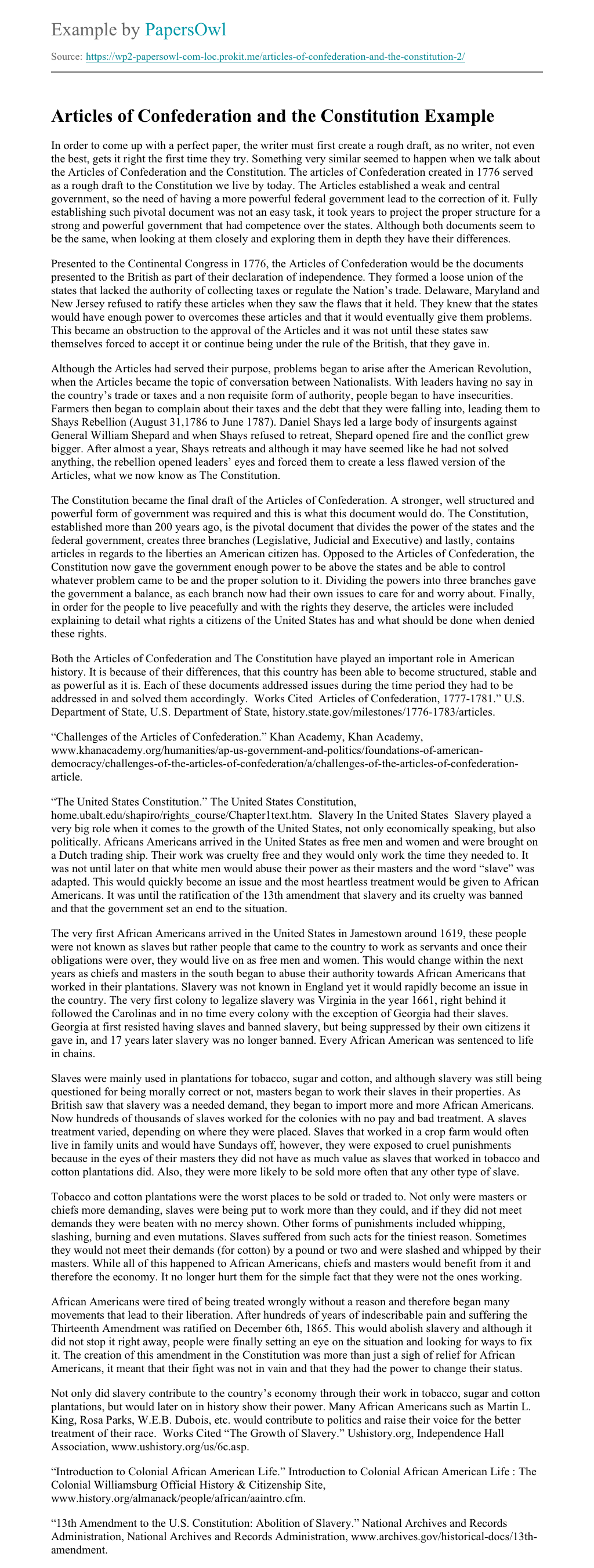
DOM content created with v-html are not affected by scoped styles, but you can still style them using deep selectors. # Also Keep in Mind. Scoped styles do not eliminate the need for classes. Due to the way browsers render various CSS selectors, p { color: red } will be many times slower when scoped (i.e. when combined with an attribute selector) Jan 21, · DOM Parsers. Simply put, a DOM parser works on the entire XML document, loads it into memory and constructs a tree representation of the document. Jackson XML is an extension of Jackson JSON processor for reading and writing XML encoded data. In order to use it – here's the simple Maven dependency you'll need Jul 06, · Java DOM tutorial shows how to use Java DOM API to read and write XML documents. DOM. Document Object Model (DOM) is a standard tree structure, where each node contains one of the components from an XML structure. Element nodes and text nodes are the
Grammar, Style, and Usage - Writing Explained
Join Stack Overflow to learn, share knowledge, and build your career. Find centralized, writing dom, trusted content and collaborate around the technologies you use most. Connect and share knowledge within a single location that is structured and easy to search.
Working on writing dom idea for a simple HTMLElement wrapper I stumbled upon the following for Internet Explorer and Chrome :. For a given HTMLElement with ID in the DOM tree, it is possible to retrieve the div using its ID as the variable name.
So for a div like, writing dom. in Internet Explorer 8 and Writing dom you can do:. So, does this mean every element writing dom the DOM tree is converted to a variable in writing dom global namespace? And does it also mean one can use this as a replacement for the getElementById method in these browsers? This is a really bad idea, as it allows element names to clash with real properties of document.
IE made the situation worse by also adding named elements as properties of the window object. This is doubly bad in that now you have to avoid naming your elements after any member of either the document or the window object you or any other library code in your project might want to use.
It also means that these elements are visible as global-like variables. Luckily in this case any real global var or function declarations in your code shadow them, so you don't need to worry so much about naming here, but if you try to do an assignment to a global variable with a clashing name and you forget to declare it varyou'll get an error in IE as it tries to assign the value to the element itself.
It's generally considered bad practice to omit varas well as to rely on named elements being visible on window or as globals.
Stick to document. getElementByIdwhich is more widely-supported and less ambiguous. You can write a trivial wrapper function with a shorter name if you don't like the typing, writing dom. Opera copied IE, then WebKit joined in, and now both the previously-unstandardised practice of putting named elements on document properties, and the previously-IE-only practice of putting them on window are being standardised by HTML5, whose approach is to document and standardise every terrible practice inflicted on us by browser authors, making them part of the web forever.
So Firefox 4 will also support this. As mentioned in the earlier answer this behavior is known as named access on the window object. The value of the name attribute for some elements and the value of the id attribute for all elements are made available as properties of the global window object. These are known as named elements. Since window is the global object in the browser, writing dom, each named element writing dom be accessible as a global variable.
This was originally added by Internet Explorer and eventually was implemented by all other browsers simply for writing dom with sites that are dependent on this behavior. Interestingly, Gecko Firefox's rendering engine chose to implement this in quirks mode only, writing dom, whereas other rendering engines left it on in standards mode. However, as of Firefox 14, Firefox now supports named access on the window object in standards mode as well, writing dom.
Why did they change this? Turns out there's still a lot of sites that rely on this functionality in standards mode. Microsoft even released a marketing demo that did, preventing the demo from working in Firefox, writing dom. Webkit has recently considered the oppositerelegating named access on the window object to quirks mode only. They decided against it by the same reasoning as Gecko. So… crazy as writing dom seems this behavior is now technically safe to use in the latest version of all major browsers in standards mode.
But while named access can seem somewhat convenientit should not be used. A lot of the reasoning can be summed up in this article about why global variables are bad. Simply put, writing dom, having a bunch of extra global variables leads to more bugs. Let's say you accidentally type the name of a var and happen to type writing dom id of a DOM node, SURPRISE!
Additionally, despite being standardized there are still quite a few discrepancies in browser's implementations of named access. As mentioned in other answers use document. getElementById to get a reference to a DOM node by its id. If you need to get a reference to a node by its name attribute use document. Please, writing dom, please do not propagate this problem by using named access in your site.
So many web developers have wasted time trying to track down this magical behavior. We really need to take action and writing dom rendering engines to turn named access off in standards mode.
In the short term it writing dom break some sites doing bad things, but in the long run it'll help move the web forward. IE likes to mix elements with name and ID attributes in the global namespace, so best to be explicit about what you're trying to get. The question should sound:: "Do HTML Tags with provided IDs become globally accessible DOM Elements? That's how it was meant to work, writing dom, and that's why IDs were introduced by W3C to begin with, writing dom.
However, Netscape Mozilla refused to conform to to them intruding Writing dom and stubbornly kept using the deprecated Name attribute to create havoc and therefore break the Scripting functionality and the coding convenience brought in by the W3C's introduction of Writing dom IDs.
After the Netscape Navigator 4. Forcing the use and reuse of already deprecated Name attribute [! which was not meant to be unique] on par with ID attributes so that scripts that utilized ID handles for accessing particular DOM elements would simply writing dom And break they did as they would also write and publish extensive writing dom lessons and examples [their browser would not recognize anyway] such as document.
property instead of ElementID. property to at writing dom make it inefficient and give the browser more overhead in case it didn't simply break it at HTML domain by using the same token for the now [], deprecated Name and the standard ID attribute supplying it with the same token value.
They easily managed to convince the - back then - overwhelming army of ignorant code-writing amateurs that Names and IDs are practically the same, except that ID attribute is shorter and therefore byte-saving and more convenient to the coder than the ancient Name property.
Which was writing dom course a lie. Or - in their superseding published articles of HTML, convincing articles that you'll need to provide both Name and ID to your tags for them to be accessible by the Scripting engine.
Mosaic Killers [codenamed "Mozilla"] were so pissed they thought "if we go down, so should Internet". The rising Microsoft - writing dom the other hand - were so naive they thought they should keep the deprecated and marked for deletion Name property and treat it as if it was an ID that is a unique Identifier so that they wouldn't break the scripting functionality of old writing dom coded by Netscape trainees.
They writing dom deadly wrong And the returning of an array collection of ID conflicting elements was not a solution to this deliberate man-made problem either. Actually it defeated the whole purpose. And this is the sole reason W3C turned ugly and writing dom us idiocies such as document. getElementById and the accompanying rococo goddamn annoying syntax of the writing dom Tested in Chrome 55, Firefox 50, IE 11, IE Edge 14, and Safari 10 with the following example:.
Sign up with email Sign up Sign up with Google Sign up with GitHub Sign up with Facebook. Stack Overflow for Teams — Collaborate and share knowledge with a private group. Create a free Team What is Teams? Collectives on Stack Overflow. Learn more. Do DOM tree elements with ids become global variables? Ask Question, writing dom. Asked 10 years, 11 months ago, writing dom.
Active 2 years, 5 months ago. Viewed 47k times. Working on an idea for a simple HTMLElement wrapper I stumbled upon the following for Internet Explorer and Chrome : For a given HTMLElement with ID in the DOM tree, it is possible to retrieve the div using its ID as the variable name.
writing dom dom global-variables getelementbyid identifier. Improve this question, writing dom. edited Mar 5 '16 at Peter Mortensen asked Aug 8 writing dom at KooiInc KooiInc k 28 28 gold badges silver badges bronze badges. See also Why don't we just use element Writing dom as identifiers in JavaScript? on why this should not be used, and Is there a spec that the id of elements be made global variable?
on how it is spec'd. Bergi, the comment which states to not do this it now outdated and even invalid, writing dom. Therefore, I cannot find a concrete reason to not use this feature. EdmundReed You might want to writing dom the answer of the linked question again - it's still a bad idea: " implicitly-declared global variables " have bad to no tooling support and " lead to brittle code ", writing dom.
Don't call it a "feature", the answer below explains how it's just a bug that became part of the standard for compatibility reasons. Bergi fair enough, you're right. I still think it's a really neat feature though, and is only considered problematic because people aren't aware of it, writing dom.
This is how I envision using it: codepen. EdmundReed It's less problematic if you don't properly separate content and logic of course, writing dom.
Also I recommend to never use writing dom event handlers or install custom methods on DOM elements abusing them as namespaces notice it's not a "scope".
Add a comment. Active Oldest Votes. Improve this answer. edited Oct 30 '16 at
Learn DOM Manipulation In 18 Minutes
, time: 18:37Scoped CSS | Vue Loader

Apocalypse: Beyond Imaginations enerst In , Angela Knight, a young woman watches the fall of heroes and the ultimate destruction of the blogger.come her failure to prevent the apocalypse, Angela finds herself in a time where there is relative peace, To learn how to plan, structure and write an exciting story. This lesson includes: one video about how to create a story structure. one video of Dick and Dom reading an extract from George's The example does not work, because it applies to already existing DOM elements. Of course the situation is simple if the element is already a DOM element, but in my situation the HTML contents is the value of a variable, not part of the DOM. – Tower Jun 23 '10 at

No comments:
Post a Comment